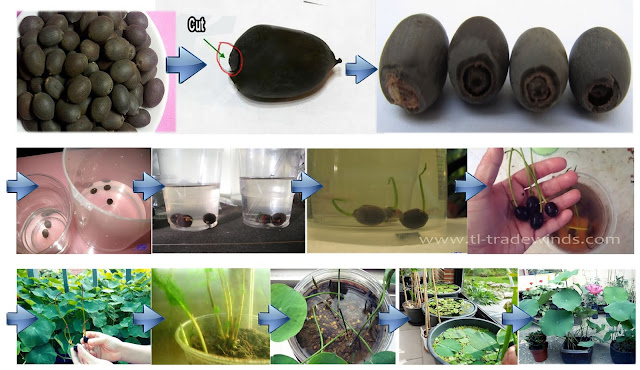Nymphaeales, the water lily order of flowering plants, a basal branch of angiosperms, or flowering plants, containing 3 families, 9 genera, and 74 species. In older botanical classification systems, the order was included in the dicotyledon class (Magnoliopsida, characterized by two seed leaves). The order is found in quiet freshwater habitats throughout most of the world. The aesthetic appeal of the water lilies, especially those of the genera Nymphaea and Victoria, has led to their worldwide cultivation.
•
white water lily
Nymphaeaceae (including the former family Barclayaceae), or the water lily family, has 6 genera and 58 species. Cabombaceae, or the water shields and fanworts, is a closely related family with 2 genera, Cabomba and Brasenia, that is sometimes included in Nymphaeaceae. The last family, Hydatellaceae, contains 1 genus (Trithuria) and 12 species.
All plants of the Nymphaeales order are aquatic. They are attached to pond or stream bottoms, but whether their leaves and flowers are submerged, floating, or standing above the water varies. They range in size from the small, fragile Cabomba(fanwort), which has floating leaves less than 0.3 cm (1 inch) in diameter, to Nymphaea, which produce leaves 50 cm (about 18 inches) wide that can cover an area 2.5 metres (8 feet) in diameter in one summer. Largest of all is Victoria, which has impressive circular, floating leaves that attain 2 metres (6.5 feet) in diameter and flowers 40 cm (about 15 inches) across.
Fanwort (Cabomba)
Many species of water lilies are suited for pools, aquatic gardens, and aquariums, where they are prized for their attractive foliage and showy flowers. The submerged leaves, the starchy, horizontal creeping rhizomes, and the protein-rich seeds of the larger species have been used as food by humans throughout history. The petioles (leaf stalks) serve as cover for fish and holdfasts for their spawn, and hoofed wildlife also browse on the plant parts. The emergent leaves provide cover for aquatic birds, and the seeds of many species are food for fish and fowl. Because they grow rapidly and can clog lakes, several members of Nymphaeales provide an essential link in plant succession—from pond to swamp to wet prairie.
Water lilies (Nymphaea)
The numerous species and hybrids of Nymphaea are the most commonly cultivated water lilies. The fragrant N. odorata, native to the eastern United States, with 13-cm (5-inch) white flowers, and its cultivars (horticultural varieties) are widely grown in parks, gardens, and natural ponds in warm temperate regions. Nuphar (yellow pond lily) is noted for its globose flowers, which are often held above the water.
The genus Barclaya (four species) is sometimes considered a separate family, Barclayaceae. It is distinguished from Nymphaeaceae by an extended perianth tube (combined sepals and petals) arising from the top of the ovary and by stamens that are joined basally. Barclaya is native to tropical Asia and Indonesia.
Brasenia schreberi (water shield) and the seven species of Cabomba constitute a basal offshoot of Nymphaeaceae, which may also be split off as the family Cabombaceae. Several species of Cabomba are distributed in eastern and southeastern North America and in much of northern South America. In addition to a few small floating leaves, Cabomba has feathery leaves along a more or less erect, submerged stem.
Water shield (Brasenia schreberi)
The family Nelumbonaceae(containing Nelumbo nucifera, or the sacred lotus, and N. pentapetala, or the American lotus) has often been placed in Nymphaeaceae, but it is only superficially similar to the water lilies. Nelumbonaceae is now placed in the lower eudicot order Proteales.
Sacred lotus (Nelumbo nucifera)
Some Nymphaeaceae genera have extensive creeping rhizomes, buried or superficial. Others have short, erect, buried stems, either with or without associated floating horizontal branches. The variously shaped leaf blades that arise from the submerged rhizomes may spread over the surface of the water or stand above the water by means of elongate petioles. Some species are able to reproduce vegetatively; Nymphaea mexicana spreads by runners, and N. micrantha of western Africa produces detachable plantlets at the junction of the petiole and the blade.
Flowers of Nymphaeaceae and Cabombaceae occur singly from nodes of submerged stems and rise to the surface of the water or higher, and their flowers are radially symmetrical. Flowers are insect-pollinated except in some flowers of Euryale that are self-pollinated in closed flowers and Ondinea, which is wind-pollinated.
In Cabomba and Brasenia, the single carpel matures into a dry follicle (opening along one seam). Leathery, several-chambered berries, which eventually rupture because of enlarged seeds, are produced by the other members of Nymphaeaceae. These fruits develop underwater even when the flower opens above water. The seeds of all genera are distributed passively, with most being released to float in water until they become anchored in the soil substratum.
Only recently has the enigmaticfamily Hydatellaceae been shown to belong in this order. The sole genus, Trithuria, has a dozen species native to India, New Zealand, and Australia. They are clumped, grasslike aquatic herbs that may be submerged, with tiny flowers aggregated into stalked headlike clusters. Four of the species are dioecious (separate male and female plants), and the others have various arrangements of male and female flowers on the same plant. In these ways, Trithuria differs greatly from the broader-leaved and larger-flowered members of the other two families in the order.









































